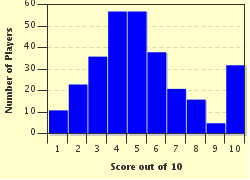Quiz Answer Key and Fun Facts
1. In 1915, a group of women (mainly from neutral countries) gathered at the Hague in the Netherlands for a conference to discuss ways that they could work for peace. At the conference, they adopted a policy that had been put forth by a Canadian working at the University of Wisconsin, Julia Grace Wales. What was Ms. Wales' plan for peace called?
2. In the fall of 1915, an American businessman chartered a boat and undertook a peace expedition to Europe. Though his intentions were good, this attempt was mocked and nothing came of it. Who was the man who sponsored this "ship of fools"?
3. In December 1916, the German government sent a message to the Allies that came to be known as the 'German Peace Note'. The Allies were skeptical about the sincerity of the Note, and rightly so. Which of these was a motive of the German government for undertaking this peace initiative?
4. In 1917, Prince Sixte of Bourbon-Parme was used as a messenger between the Allies and the Central Powers. His role was to suggest terms for peace and determine the willingness of the belligerents to enter into negotiations. Sixte was chosen for this because he was related to an important character involved; who?
5. A proposition for peace came from Pope Benedict XV in 1917. Which coalition of the war was he thought to be favouring with this peace initiative, the Allies or the Central Powers?
6. Which of these statements or agreements called for a peace based upon "no annexations and no indemnities"?
7. In the summer of 1917, the Petrograd Soviet tried to convene a conference of Socialists from all belligerent countries, to be held in Stockholm. The Allied governments banded together and decided not to provide travel documents for their Socialists to attend. For which of these reasons did the Allies not want to participate in the Stockholm Conference?
8. The Treaty of Brest-Litovsk signified the end of the war for one of the original belligerent powers; which country laid down its arms in early 1918 and signed this treaty with the Central Powers?
9. In the fall of 1918, the German High Command realized that they would not be able to defeat the Allies on the battlefield. The new chancellor of Germany was instructed to seek negotiations for an armistice immediately. Whom did he first approach in doing so?
10. Which of the following was NOT a treaty to end hostilities that came out of the Paris Peace Conference?
Source: Author
guitargoddess
This quiz was reviewed by FunTrivia editor
bloomsby before going online.
Any errors found in FunTrivia content are routinely corrected through our feedback system.

